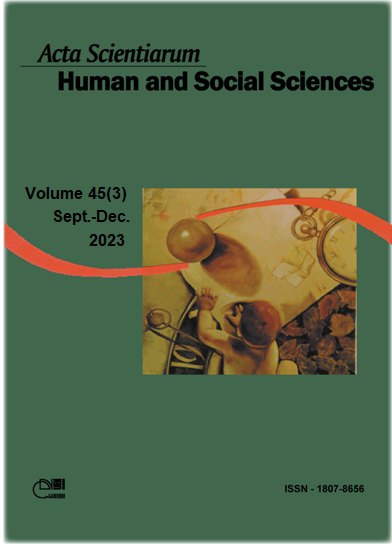Contribuições da escuta participante em terreiros de Umbanda para uma etnopsicologia brasileira
Résumé
A etnopsicologia propõe o diálogo entre a antropologia e a psicologia. O etnopsicólogo busca compreender como a comunidade a ser estudada constrói suas próprias etnoteorias. Objetiva-se discutir o modelo etnopsicológico utilizado em pesquisas realizadas em terreiros de umbanda no interior do estado de São Paulo (Brasil), a fim de contribuir para reflexões metodológicas a serem aplicadas em outros contextos comunitários de matriz africana no país. Para tanto, analisaram-se os procedimentos etnográficos (observações participantes e registros em diário de campo) incorporados por psicólogos que trabalham com abordagem psicanalítica. A escuta participante mostrou-se instrumento relevante para a pesquisa no que tange à experiência de campo, às relações transferenciais e ao refinamento da escuta em psicanálise, com base nas perspectivas freudiana e lacaniana. O primeiro passo é partir da implicação em campo, memórias, bagagens existenciais e em que medida elas nos enlaçam ao tema. A segunda etapa é a construção do trabalho de campo, a imersão na perspectiva da escuta participante e do ‘ser afetado’ e a definição dos procedimentos. O terceiro ponto é o pinçamento do que se repete, o centramento das peças, as análises, as combinatórias significantes e tudo aquilo que elas enunciam. Espera-se contribuir com outros pesquisadores e profissionais que queiram amparar-se na etnopsicologia para sua atuação, intervenções e/ou trabalho de campo. O modelo do método etnopsicológico pode ser importante no tecido de uma escuta atenta ao modo como cada comunidade constrói seus saberes, a fim de restituir ao outro a possibilidade de se dizer e a posição de ser escutado em seus próprios termos.
Téléchargements
DECLARAÇÃO DE ORIGINALIDADE E DIREITOS AUTORAIS
Declaro que o presente artigo é original, não tendo sido submetido à publicação em qualquer outro periódico nacional ou internacional, quer seja em parte ou em sua totalidade.
Os direitos autorais pertencem exclusivamente aos autores. Os direitos de licenciamento utilizados pelo periódico é a licença Creative Commons Attribution 4.0 (CC BY 4.0): são permitidos o acompartilhamento (cópia e distribuição do material em qualqer meio ou formato) e adaptação (remix, transformação e criação de material a partir do conteúdo assim licenciado para quaisquer fins, inclusive comerciais.
Recomenda-se a leitura desse link para maiores informações sobre o tema: fornecimento de créditos e referências de forma correta, entre outros detalhes cruciais para uso adequado do material licenciado.

























